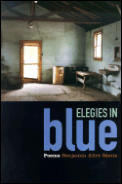Ana Castillo, the reknowned Xicana poet, novelist and essayist has written one of the loveliest little children’s book I’ve ever seen. It is a blessing and a prayer based on an old Aztec flor y canto beautifully illustrated by Susan Guevara.
The book is small and looks something like the facsimiles of the old Aztec codices. It is written Spanish. It begins with Mi Hija, La Paloma, or My Daughter, the Dove; a canto designed to teach little girls of their preciousness, beauty and how to live their lives. It has a charming lilt to it. The first stanza begins:
“Mi hija, preciosa,
como un collar de oro
preciosa
como una pluma de quetzal,
tu eres mi sangre,
mi imagen - ”
“My daughter,
precious like a golden necklace
precious
like the feather of a quetzal,
you are my blood
my image - ”
It continues to extol the virtues of the daughter as well as giving some life lessons, reminding the daughter not to be lazy, to study, to work. It tells that a girl must learn to live her life on the right path.
The second section is written for a boy,
Mi Hijo, El Aguila, El Tigre or
My Son, The Eagle, The Tiger begins:
“Mi hijo,
aguila y tigre,
ala y cola
Hijo mio,
Tan querido, tan amado –
¡escuche!”
“My son,
eagle and tiger,
wing and tail,
My son,
So dear, so loved –
listen!”
It goes on to speak of ancestors, of pride, or what our ancestors have left for us in lessons, in our culture, our heritage. It tells of doing good works, becoming a good man, of living life with care and dignity. It asks that the son listen with his heart and go on to become a good man.
The book is illustrated with Aztec symbols from the old codices as well as delicate and powerful paintings on amatl paper or tree bark in the indigenous tradition. The paintings, while done in the style of the ancient people are of contemporary children and their parents and surprisingly, fit in perfectly with the Aztec symbols and images.
It is an astounding message, a lovely and loving book and a testament to Ms. Castillo’s love of our culture. She and Ms. Guevara have created a lasting and honorific tribute to our ancestors as well as a beautiful and contemporary moral poem for children and parents to enjoy for years to come.


